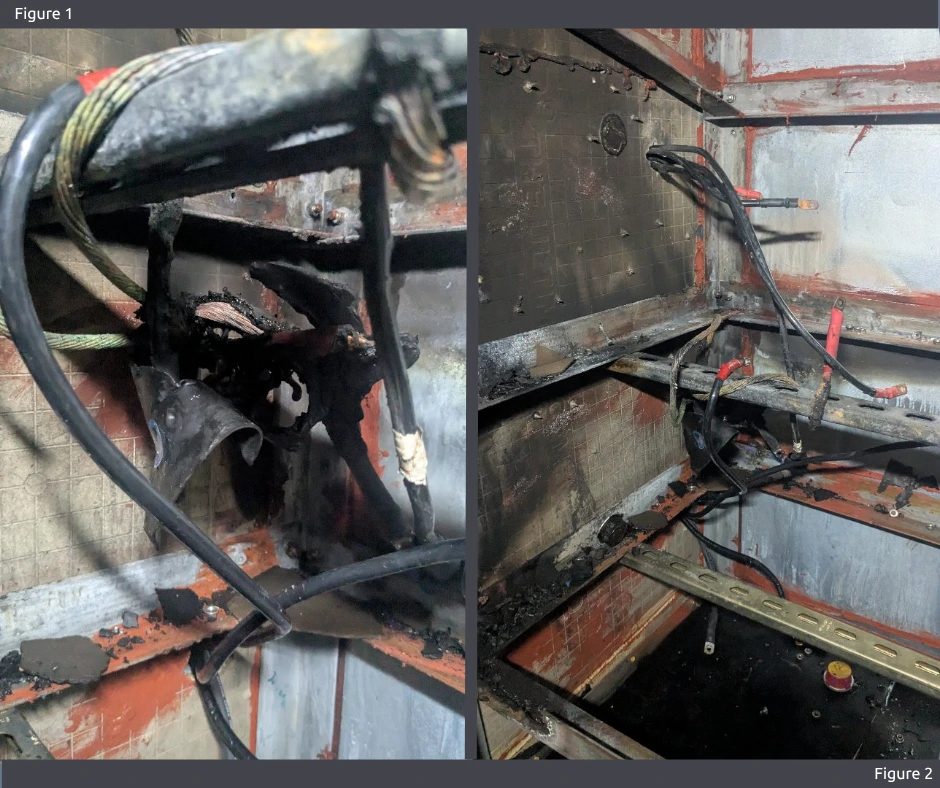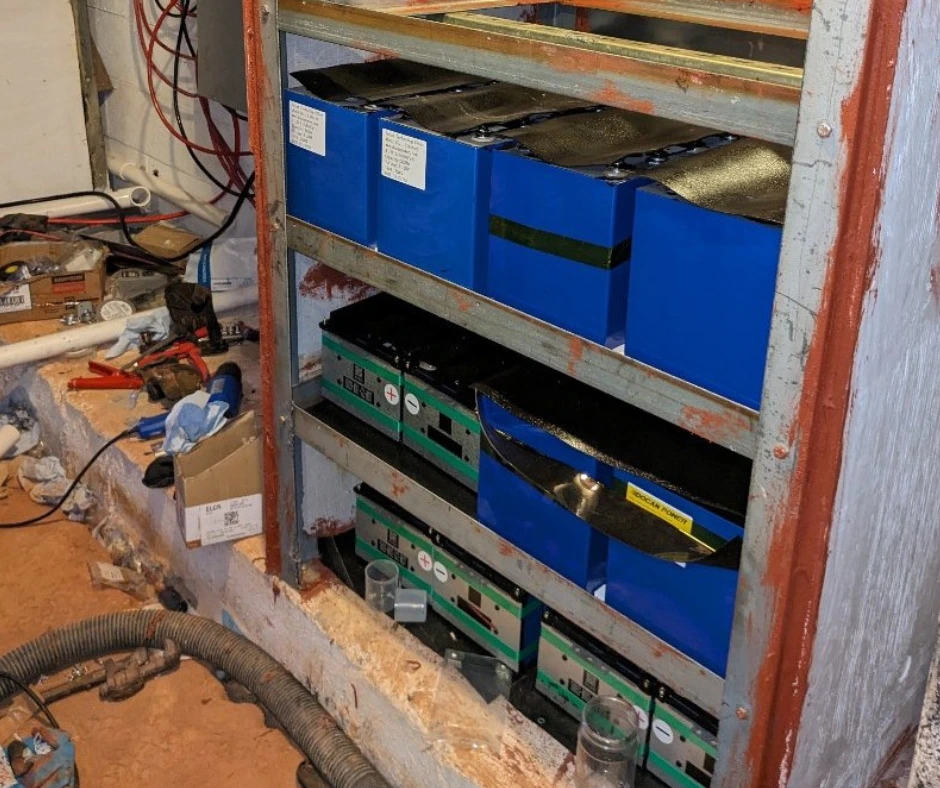Sometimes the most expensive bill we pay is the cost of experience: making mistakes. Failure is an integral part of learning, and in the DIY energy world, there is a LOT of failure. As we learn together, we grow together, and we are safer for it.
For instance, it may be tempting to cut costs and use home-made shelving, racking, and other solutions, but there are very good reasons why expensive and quality solutions exist. Take the following story, for example.
Figure 1 and Figure 2 are the result of a battery fire. The malfunction was a 60kWh LiFePO4 battery bank assembled without a BMS (Battery Management System). Quality batteries include a built-in BMS, but this system used a less expensive battery without one.
It did not include a separate or external BMS, but relied only on output breakers on the positive terminals. Unfortunately, those cheap breakers didn’t trip when they should have.
In addition to cheap cells, the batteries did not come with insulating sheets. These were added later. The final product was a battery pack made of 16 individual battery cells connected in series, housed in vinyl-wrapped, reclaimed wood and covered with insulation sheets.
This combination of battery failure and flammable shelving created an expensive mistake.
Had this system included an external BMS or used batteries with one pre-installed, this accident likely would never have occurred. Additionally, had the system been stored in a proper storage enclosure, the overall damage would have been much less.
A BMS is critical because you may never know what’s happening inside the battery, and you may never get the chance to find out. The BMS is an essential safeguard for any alternative energy setup. It keeps your batteries balanced and prevents overcharging, overheating, and cell bloating before things become dangerous.
Never overlook the importance of safety components like a BMS, and never underestimate the risk of makeshift materials, especially wood and repurposed lumber as seen in Figure 3. Static, poor insulation, or imbalanced currents can become dangerous quickly.
Having the proper safety materials and components can save your system or home, even when unpredictable and unexpected electrical incidents happen. While this story is about user error, not all electrical disasters are user related. It’s important to be prepared.
This story is shared with permission from a member of the DIY community. We appreciate their willingness to share their experience, and we respect their wishes to remain anonymous.


